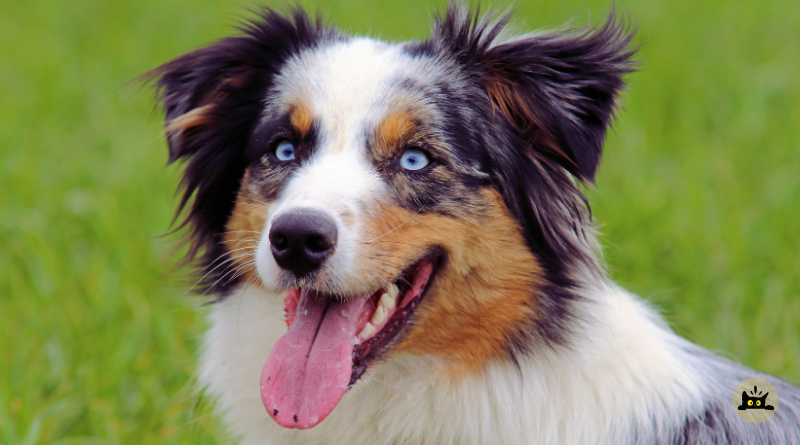Introduction to the Australian Shepherd Breed Guide
This Australian Shepherd breed guide covers their origin, appearance, personality, health care, training and daily care so you can decide if this amazing breed fits your home.
History and Origin
Australian Shepherds come from early European sheepdogs brought to North America by Spanish and British settlers. These sheepdogs adapted to the rough land and long days on the range. Basque shepherds arriving during the 1800s added Spanish helper dogs into the mix, improving hardiness and coat traits. During the California Gold Rush the growing need for sheep also increased the need for able herding dogs. Ranchers nicknamed these agile merle-patterned dogs “Australian” after the sheep they accompanied from Down Under. Over decades breeders refined their abilities on American ranches, crafting the breed we know today.
Physical Appearance and Grooming
Australian Shepherds are medium dogs standing between 18 to 23 inches at the shoulder and weighing 40 to 65 pounds. Their thick coat comes in black, blue merle, red or red merle often with white and tan spots. Regular brushing once a week removes loose hair and helps keep coat healthy. Increase grooming when they lose a lot of hair to keep mats at bay. Check ears for dirt, wipe them clean gently and brush teeth two to three times every week. Clip nails when needed to prevent cracking and support movement.
Personality and Behavior
Known for a sharp mind and endless curiosity Aussies form strong bonds with their families. They thrive on human interaction and become restless without brain games and daily activity. Their herding drive can show up as nipping or guiding children and other pets. Proper early socialization teaches them how to greet new people, other dogs and animals. With regular play and set tasks they focus energy positively making them able to team up in dog sports and farm chores.
Health Considerations
Australian Shepherds are generally healthy yet some health problems deserve attention. Careful breeders test for these issues and share health results for breeding dogs.
- Hip and Elbow Dysplasia can cause joint pain later in life. Have a vet check hip and elbow scores before choosing a puppy
- Eye issues that can cause vision loss affect vision over time so yearly eye checkups by a dog eye specialist are recommended
- Drug sensitivity makes some dogs react to certain medications. A genetic test for drug sensitivity can guide safe treatment plans
Genetic Testing
Early health tests help breeders avoid risky matches. Ask for proof of hip, eye and drug sensitivity test results before welcoming an Aussie into your home.
Training and Exercise
Aussies need at least two hours of daily physical activity plus brain games. Group activities like agility, herding and obedience trials appeal to their working drive. Reward based training using treats, praise, and playtime ensures working together and strengthens your bond. Mixed instructions may lead to barking, chewing or escape tries as they seek stimulation.
Common Training Challenges
Some Aussies learn by observation so they mimic unwanted behaviors if leaders are unclear They may become vocal when bored so consistent cues for quiet help control barking Separation practice prevents anxiety when you step away for errands
Nutrition
Select a balanced diet suited to your dog’s life stage. According to pet food experts group canine nutrition guidelines choose foods approved by the pet food experts group for puppy, adult or senior dogs. Portion out food based on age, weight and how active they are and always have fresh water available. If you add supplements talk to your vet first. The National Animal Supplement Council recommends omega three supplements for coat and joint health but only under professional guidance.
Everyday Health Checks
Watchful owners catch possible health problems early by noting changes at home. Look for:
- Limping, not wanting to jump or stiffness after resting
- Heavy breathing in mild weather
- Strange lumps, bumps, or oozing spots on skin
- Dull fur, flaky skin or constant itching
- Cloudy, red or watery eyes
- Not eating, weight ups and downs or tummy trouble
- Mood shifts such as more stress or low energy
Simple Steps to Help
When a sign feels off take these steps:
- Inspect coat, paws and ears for dirt, wounds or parasites
- Brush coat weekly and more often when they lose a lot of hair
- Schedule yearly wellness exams including hip and eye checks
- Build a training routine with recall and calm alone time exercises
- Enrich daily life with interactive toys, scent games or short training sessions
- Keep up grooming visits for nail cuts, ear cleaning and teeth cleaning
- Contact your veterinarian at the first sign of ongoing pain, skin issues or tummy trouble
Conclusion
Australian Shepherds offer striking beauty, sharp minds and a strong work ethic. They flourish in homes that give clear guidance, organized tasks and plenty of exercise. Sticking to early training and socializing, and regular checkups ensures a loyal friend capable of both work and play. If you seek an active, smart buddy to fit into your family the Australian Shepherd may be the ideal fit.
Sources : National Animal Supplement Council, American Animal Hospital Association, International Cat Care
You might also enjoy another post in this category: Shih Tzu Dog Breed Guide

